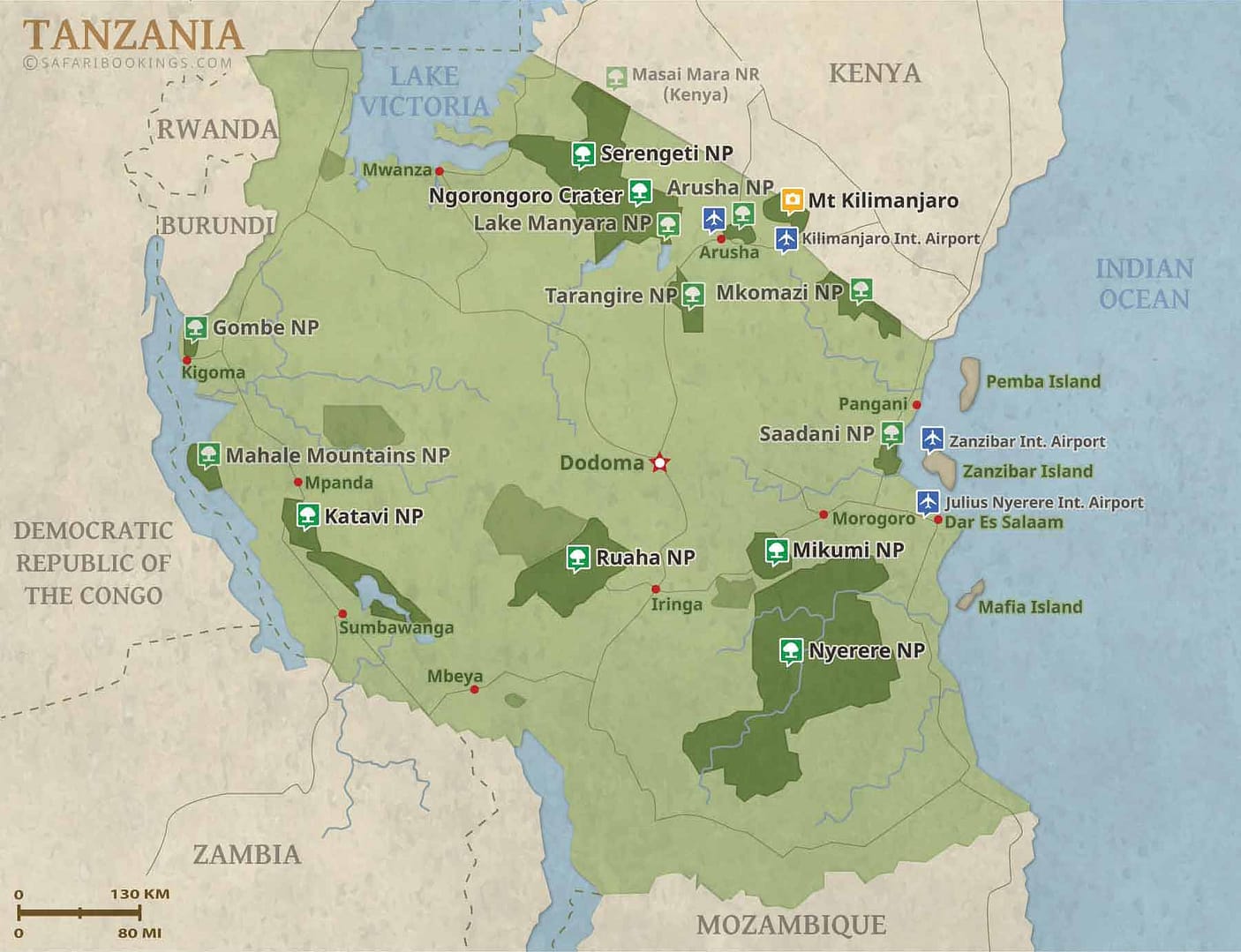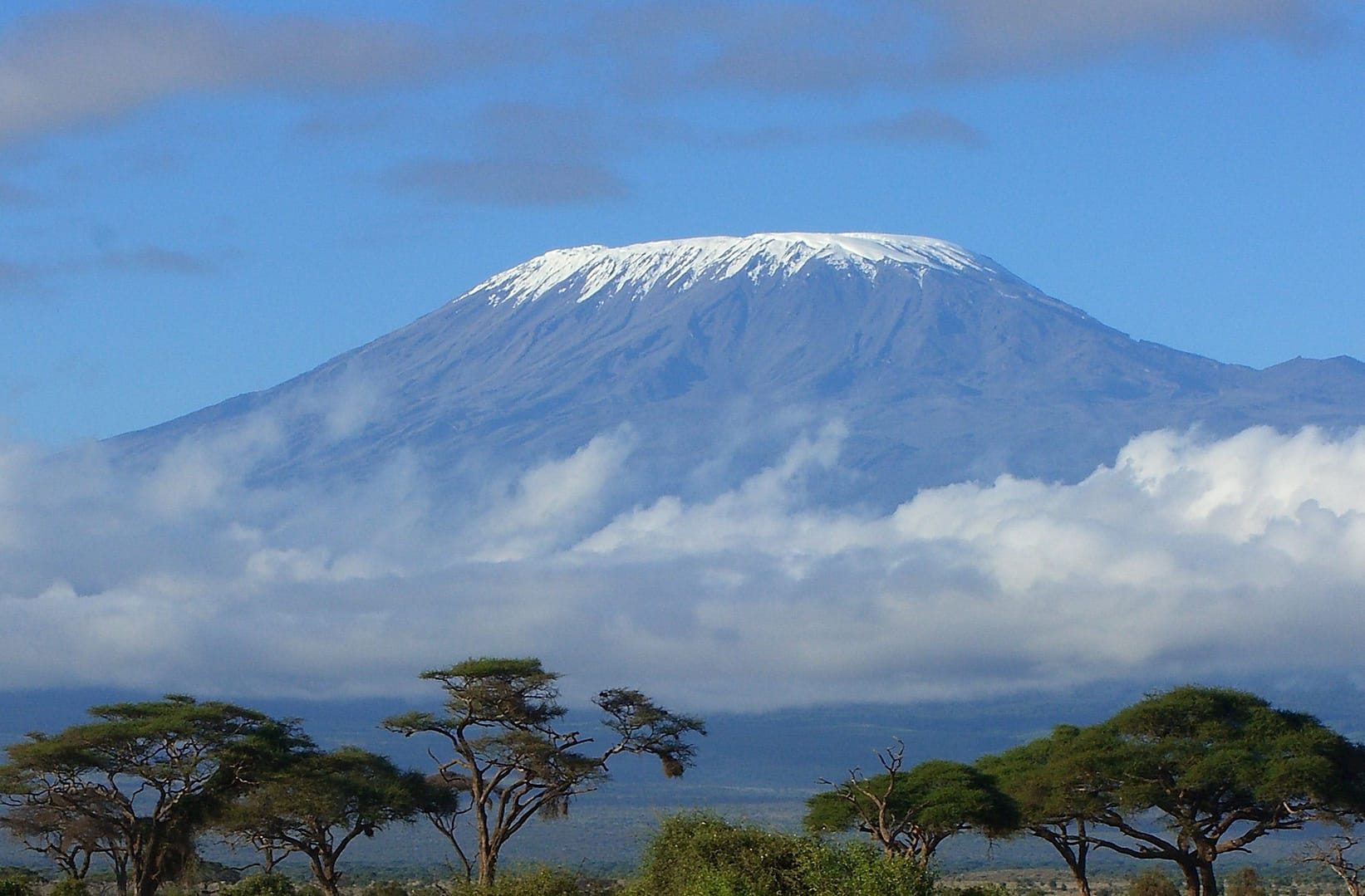
Tanzania is Africa’s visual masterpiece. It is a country of natural splendor, astounding wildlife, seductive beaches, charming ancient towns, archaeological sites, and geological wonders. Africa’s highest mountain, Mount Kilimanjaro, rises from lush, grassy plains and towers over the land. Its snow-capped peak is a sight to behold. Climbing Mount Kilimanjaro is surprisingly easy and standing on the roof of Africa is a life-changing experience. The ideal bush and beach destination, visitors can witness the mighty herds of The Great Migration thundering across the Serengeti plains and end their unforgettable safari with a serene beach holiday on Zanzibar, the intoxicatingly beautiful and exotic Spice Island.

The annual Wildebeest Migration is an awe-inspiring display of nature’s grandeur. Around 2 million wildebeest, zebras, and antelopes migrate in search of fresh grazing, making it one of the last mass terrestrial animal movements on Earth. The Serengeti National Park hosts the bulk of this remarkable phenomenon.
Mobile tented camps move regularly to stay as close to the herds as possible. Some accommodations offer easy access to river crossing points but the availability of well-located safari-tented camps between June and October (river crossing season) is limited. If you want front-row seats to the dramatic river crossings, you should book your Tanzania safari at least a year in advance. Or opt to go when the herds give birth and graze their way across the plains, which is just as impressive to see and the tourist crowds are fewer. Chat with one of our Africa Safari Experts to plan your trip to coincide with the movements of the herds.
The Ngorongoro Crater is One of the Seven Natural Wonders of Africa a World Heritage Site, that provides an enclosed ecosystem where you can spot the Big 5 (lion, elephant, buffalo, leopard, and rhinoceros). With its diverse habitats, the Crater supports approximately 30,000 animals, making it one of East Africa’s most reliable locations for Big 5 sightings.
The Ngorongoro Crater is home to some of Africa’s densest large mammal populations was formed around 2.5 million years ago when a giant volcano exploded and collapsed on itself. Measuring in at around 600 meters (1 970 feet) deep, the Crater’s floor covers about 260 square kilometres (100 square miles).
Explore Tanzania’s lesser-visited parks and reserves, offering unique and intimate wildlife encounters away from the crowds. Enjoy activities like fishing, walking, boating safaris, off-roading, and night drives, which are not permitted in national parks like the Serengeti. Tanzania’s undiscovered safari spots offer incredible wildlife encounters far away from the crowds. You can enjoy fishing, walking, boat safaris, off-roading, and night drive activities. You can visit Ruaha National Park, home to the country’s biggest elephant population, Nyerere National Park (Selous Game Reserve), is an important sanctuary for endangered wild dogs, Mahale Mountains or Rubondo Island chimpanzee trekking.
After a thrilling safari experience, relax on the picturesque beaches of Zanzibar, Mnemba Island, Pemba Island, or Mafia Island. These tropical paradises offer serene settings for reflection and rejuvenation. Days on safari can be long and dusty, and a sun-kissed tropical island is an ideal place to reflect on your incredible experience before heading back to everyday life. You can easily fly from your camp or hotel after breakfast and be on a powder-soft beach in time for sunset cocktails. You can go to:


Mount Kilimanjaro, the tallest mountain in Africa, presents a challenging yet rewarding climb. Reaching the “Roof of Africa” at almost 6 kilometers above the plains of Tanzania is an unforgettable achievement. Mount Kilimanjaro is not only the tallest mountain in Africa, it’s also the highest free-standing mountain on Earth. Rising almost 6 kilometres (4 miles) above Tanzania’s plains, climbing to the ‘Roof of Africa’ can take five or more days to complete. There are many routes to the top with varying levels of difficulty, climbing time, crowdedness, and natural beauty. Chat with one of our Experts about planning a Kilimanjaro hike, based on your wishes and abilities. We can also easily combine your Kili experience with a Tanzania safari in nearby parks and reserves.
Tanzania is accessible through direct and one-stop flights to Dar es Salaam, Kilimanjaro (near Arusha), and Zanzibar Island. Arusha serves as the starting point for the popular Northern Safari Circuit, while Kilimanjaro International Airport (JRO) is close to Arusha. Julius Nyerere International Airport (DAR) is the main airport for visitors heading to the southern parks.
Domestic flights between reserves can be arranged by tour operators as part of your safari package. Several domestic carriers, including Air Tanzania, Precision Air, Regional Air, Coastal Aviation, and Auric Air operate domestic flights within Tanzania.
Ensure that your passport is valid for at least six months and has a clean and full visa page for endorsement. If you are arriving from a yellow-fever-infected country in Africa or the Americas, a yellow fever vaccination certificate is required. Most visitors will need a visa, which can be obtained in advance through the official online visa application portal or through the local Tanzania Embassy or High Commission. Visas can also be obtained upon arrival, although the process may be time-consuming.
Join us on an unforgettable safari experience in Tanzania, where nature’s wonders, wildlife encounters, and breathtaking landscapes await you. From the world-renowned Wildebeest Migration to the hidden gems of Tanzania’s lesser-visited reserves, each moment promises an adventure of a lifetime. Contact us today to plan your tailor-made Tanzania safari and create memories that will last a lifetime.